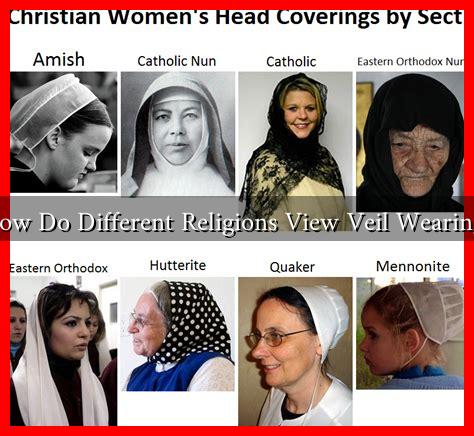-
Table of Contents
How Do Different Religions View Veil Wearing?
The practice of wearing a veil has deep cultural and religious significance across various faiths. From the hijab in Islam to the mantilla in Catholicism, veils serve as symbols of modesty, spirituality, and identity. This article explores how different religions perceive veil wearing, highlighting the theological, cultural, and social implications associated with this practice.
The Islamic Perspective on Veil Wearing
In Islam, the hijab is perhaps the most recognized form of veiling. It is often interpreted as a requirement for Muslim women to dress modestly and cover their hair in public. The Quran mentions modesty in several verses, with Surah An-Nur (24:30-31) emphasizing the importance of women covering their adornments.
- Interpretations of the Hijab: The hijab can take various forms, including the burqa, niqab, and chador, each with different levels of coverage.
- Empowerment vs. Oppression: While some women view the hijab as a symbol of empowerment and personal choice, others see it as a form of oppression imposed by patriarchal structures.
In recent years, the hijab has also become a focal point in discussions about religious freedom and identity, particularly in Western societies where it is sometimes met with resistance. For instance, in France, the ban on wearing religious symbols in public schools has sparked debates about secularism and individual rights.
Christianity and Veil Wearing
In Christianity, the practice of wearing a veil has historical roots, particularly within Catholicism. The mantilla, a lace or silk veil worn by women during Mass, symbolizes respect and reverence in the presence of God. The Apostle Paul addresses the topic of head coverings in 1 Corinthians 11:5-6, suggesting that women should cover their heads while praying or prophesying.
- Modern Practices: While some denominations still uphold the tradition of veiling, many modern Christian communities have moved away from this practice, viewing it as culturally outdated.
- Symbol of Submission: In some interpretations, the veil represents a woman’s submission to God and her husband, which has led to debates about gender roles within the church.
In contrast, other Christian groups, such as Quakers and some Evangelicals, emphasize inner spirituality over outward symbols, leading to a rejection of veiling altogether.
Judaism and the Tichel
In Judaism, the practice of veiling is often associated with married women who cover their hair with a tichel or sheitel. This practice is rooted in the concept of modesty (tzniut) and is derived from interpretations of the Torah.
- Modesty and Identity: For many Jewish women, wearing a tichel is a way to express their faith and cultural identity.
- Variations Among Denominations: The practice varies significantly among different Jewish communities, with Orthodox women more likely to adhere to the custom than Reform or Conservative women.
In recent years, the tichel has also become a fashion statement, with many women using vibrant colors and patterns to express their individuality while adhering to religious guidelines.
Other Religious Perspectives
Veiling is not exclusive to the three Abrahamic faiths. Other religions also incorporate veiling practices:
- Buddhism: In some Buddhist cultures, women wear veils as a sign of respect and modesty, particularly in monastic settings.
- Hinduism: The dupatta or chadar is often worn by women in India, symbolizing modesty and cultural identity.
Conclusion
The practice of veil wearing is multifaceted, with each religion offering unique interpretations and significance. While some view veiling as a symbol of faith and identity, others see it as a contentious issue tied to gender roles and personal freedom. As societies continue to evolve, the dialogue surrounding veil wearing remains relevant, reflecting broader themes of cultural identity, religious expression, and women’s rights.
Understanding these diverse perspectives can foster greater respect and dialogue among different faith communities, ultimately enriching the global conversation about modesty, identity, and freedom of expression.
For further reading on the topic, you can explore resources such as Pew Research Center for statistics and studies on religious practices worldwide.

